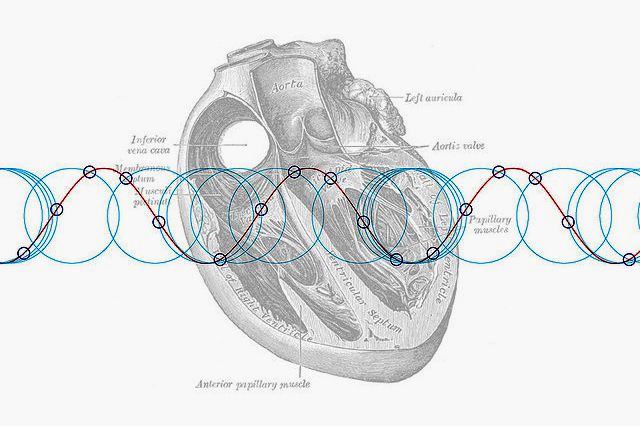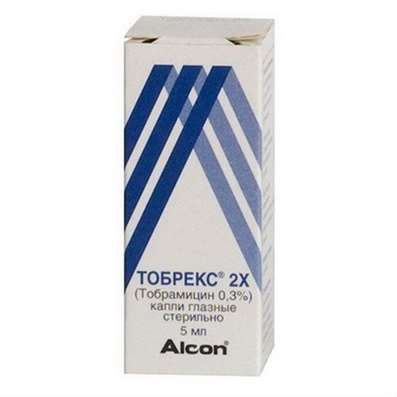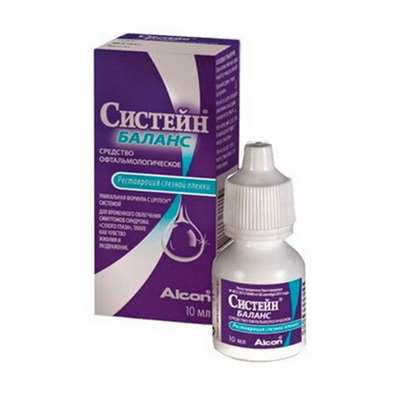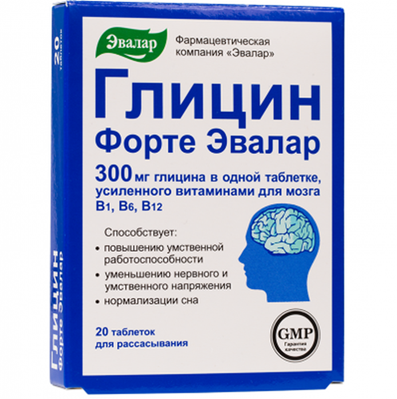HIV-related Myocardial Damage and Ways to Protect
22 Oct 2016
Do procistein antioxidant capable of preventing the progression of HIV-induced cardiomyopathy?
Today, according to conservative estimates, the number of alcohol abusers in Russia is 15 million people. The acuteness of the problem is added the lack of effective treatments for alcohol dependence and extremely high levels of social stress, prompting many men quite favorably treated for alcohol. Perhaps it is for this reason that our country has consistently ranked first in the world rankings of male mortality. Note that in the world there are few precedents to time in the non-military deaths from injuries exceeded the death rate from cancer. Lethality are usually traumatic brain injuries, and more than 3/4 of the persons receiving them, are in a state of intoxication.
To reduce alcohol damage for heart – lots of them buy Meldonium for sale.
The number of people in the world living with the infection caused by the human immunodeficiency virus (HIV), more than 40 million in Russia -. 350 thousand people. Unfortunately, the prevalence of alcoholism among HIV-infected individuals is very high, giving rise to a number of additional health and social problems. Of special note is the fact that alcohol effects on the heart in patients with HIV infection continues to be unexplored.

However, more significant are heart disease. Among males 35 - 74 years, mortality from cardiovascular disease approaches 1200 per 100 thousand, that is 6 times higher than, for example, in Australia, France, and Japan. During the year, our country has lost about a million people due to heart disease. Population losses due to heart disease, comparable to the loss of life in wartime.
Ironically, heart disease gradually become a significant problem in the treatment of HIV-infected patients. The fact that the implementation of aggressive antiretroviral therapy in clinical practice leads to significant prolongation of their life, which is approximately half of these patients have time to develop HIV-related heart failure.
It is generally known that an excessive intake of alcohol can lead to the expansion of the heart cavities (dilated cardiomyopathy) and "substitution" cardiac muscle connective tissue. However, despite the existence of a set of concepts, precise mechanisms involved in the early stages of myocardial damage caused by HIV and alcohol are still unexplored. Perhaps for this reason that in the XXI century, the specific treatment of alcoholic heart disease remains undeveloped. While heart failure (inability of the heart to pump enough blood sufficient for metabolism in tissues) in alcohol abusers persons is often "energy" and the lumen of the heart vessels stored, they now receive the same treatment as the patients with sharply narrowed due to atherosclerosis of the coronary arteries.
For cardiovascular health in the light of the epidemiological data on the benefits of alcohol consumption in small quantities, these problems are seen even more complex.
More recently it has been discovered that the alcohol excess, stress, social or HIV infection becomes a source of life-giving oxygen damaging free radicals, which cause damage to the heart or blood vessels. There are also special protective molecules - antioxidants - which "quench" free radicals and thus protect the heart and blood vessels from oxidative (oxygen) stress.
Our study was intended to unravel a tight ball, which consists of three related issues:
- What are the specific molecular mechanisms trigger the development of alcohol and HIV-associated heart disease?
- What are the consequences resulting alcohol with chronic HIV infection?
- How can I limit myocardial damage caused by alcohol?
Alcohol and the heart
It is known that alcohol has a biphasic effect on the cardiovascular system. In epidemiological studies, it appears that moderate alcohol consumption (1 - 2 drink per day) results in a significant reduction of cardiovascular risk and overall mortality. Note that one drink corresponding to 12 g (15 ml) or 0.5 ounces in terms of pure alcohol (about 150 ml of wine or 360 ml beer or 40 ml vodka) was adopted as a universal unit of alcohol consumption. Small doses of alcohol consumption is accompanied by a decrease in the production of a number of biomolecules (cytokines) that cause inflammation and atherosclerotic vascular wall changes and increase in the blood concentration of "protecting" the high density lipoproteins.
However, the relationship between alcohol consumption and mortality is J-shaped. This means that even with a slight excess of the daily dose into 1-2 drink even once a month mortality, including cardiovascular, starts to rise progressively. That is why we can not in the absence of the culture of drinking in Russia is widely recommend the use of alcohol as a preventative measure.
In toxic doses of alcohol has a depressive effect on the myocardium. The earliest stage debut alcoholic heart disease remain poorly understood today continue.
It is known that alcohol breaks the connection between the electrical excitation of the cardiomyocytes and the reduction of their internal "little motor" - myofibrillar apparatus. The main role in this process is played by damage to the signal mechanism implemented by calcium ions. Also decreased the activity of the ion pump cell, protein degradation processes begin to prevail over their synthesis.
As shown by recent studies, the key is owned by the above mentioned oxidative stress.
At a further stage of development of alcoholic heart disease, which is called cardiomyopathy, begin to dominate the processes of substitution of connective tissue of the myocardium, dilatation of the heart cavities and violations closing valve leaflets. It is clinically characterized by the beginning of heart failure and various arrhythmias, including sudden-onset (the phenomenon of "holiday heart") that appear to be partly determines the well-known and a higher level of cardiac mortality on Mondays compared to other days of the week. Women are more prone to cardiotoxic effects of ethanol, alcoholic cardiomyopathy and they develop, typically at lower doses of alcohol consumed over a short period of time
Interestingly, heart failure in this case is completely reversible with cessation of alcohol intake.
HIV and heart
Despite the fact that heart disease is not a problem prevalent among patients with HIV infection in the young age at autopsy, over 50% of patients exhibit myocardial damage some extent. On the one hand, highly arti-retroviral therapy reduces the risk of HIV-associated pathologies of the cardiovascular system. On the other hand, in the case of heart disease already good background antiretroviral effect is observed when canceling retroviral therapy and early treatment of heart failure.
The exact mechanisms debut heart disease caused by HIV, remain poorly understood. To date, known only to main elements of this process:
1. The virus penetrates the inner vessel shell due macropinocytosis and "Trojan".
2. Once in the myocardium, HIV infects macrophages located around blood vessels and cells, which causes the release of these signaling molecules cytokines, which enhance the migration of an additional amount of inflammatory cells, macrophages and T-lymphocytes.
3. The infected macrophages and lymphocytes are the source of new virus particles, as well as tumor necrosis factor, which triggers a self-destruct program - apoptosis - cardiomyocyte cells in the heart, and the debut of heart failure.
HIV-transgenic animals as a new geological model
One of the most difficult step is to search for a model on which to put a similar experiment, since the study of the pathogenesis of HIV-induced organ damage in humans is limited by ethical circumstances in many ways. For a long time the most appropriate model for the study of such lesions was lentiviral infection in primates, which is very similar to HIV in humans. However, certain differences in physiology during infection and the high cost of high technique made it not comfortable in a wide practical use.
Many aspects of the HIV infection would have appeared much later disclosed, but not so long ago were obtained transgenic animals carrying the genes of human immunodeficiency virus. In rats and mice gene all genes of HIV-1 was artificially incorporated but critically required for infection of real gag and pol genes. This eliminates the possibility of contamination when working with such HIV-transgenic animals.
New unique model of Sprague-Dawley rats transgenic HIV was one of the most successful for the study of HIV-associated pathology. In these animals a high level of production of viral proteins, including gp 120, in the myocardium and other tissues. Research on the pathology of cardiac and skeletal muscle HIV-transgenic rats showed the similarity of their damage with those diagnosed in HIV-infected people.
The convenience of this biological model led to our choice of this animal as a participant of the experiment. As control animals, we used Sprague-Dawley rats, wild-type, without carrying HIV genes. During the 12-week experiment, half of our animals are treated with alcohol (36% of total energy intake) or water in the composition of the liquid diet by Lieber-DeCarli. Thus it was formed by four groups of rats (6 animals each): "Alcohol", "HIV", "HIV + alcohol" and control.
Atropine-1 and the protein degradation pathway
And in the case of alcohol, and in the case of HIV-induced heart disease among the most important points is the cardiac muscle atrophy. thinner heart wall, wherein the cavity opposite the dimensions increase. Of paramount importance here is the imbalance between the synthesis and degradation of cardiac proteins. What leads to the fact that the collapse of the proteins of the heart begins to prevail over their synthesis?
New polypeptide chain - the future proteins - are synthesized on ribosomes, the factories. Already at this stage requires the support of special-assistants proteins (chaperones HSP70), which, by binding to specific sites of the polypeptide, supports it in "straightened" form and thus prevent "sticking". Chaperones are participating in n post-translational folding - giving the protein molecule functional conformation. After heat shock or excess alcohol / acetaldehyde protein molecule loses its "face", so-called secondary structure. This is where the patient is connected shaperonovaya machine, which is able to restore the lost secondary structure. Another set of chaperones involved in returning protein correct conformation, is located in the power cell stations - mitochondria - molecular complex HSP60 - HSP10 (5) consisting of a "barrel" (14 molecules HSP 60) and "lid" (7 HSP 10 molecules) . The polypeptide chain is entirely flows into the lumen, after which the "cap" of HSP 10 is omitted. Inside the "barrel" protein, "tumbling" and rearranging bonding bridges S-S bonds, takes energetic favorable conformation as its secondary structure is formed anew. In the cytoplasm of the cell works like him, but devoid of elegant caps, komleks TCP-1 eight subunits.
Sometimes the restoration work of the secondary structure of a protein is absolutely impossible. In this case, he receives a "black mark" ubiquitium that it, like a Christmas tree, "put in" special protein atrogin-1. This protein tends to break down in the "factory of death", which is called the proteasome.
Thus it turns out that irreversibly damaged proteins whose structure is no longer possible to recover, due to the special cross-linking molecules are marked with ubiquitin, and then sent to the proteasome for destruction. One of these labeling molecules is atrogin-1, which was opened in 2001 in the skeletal muscles. It was shown that atrogin-1 is involved in the development of muscular dystrophy, as increased synthesis atrogina-1 leads to a more rapid destruction of cell proteins.
Later, it turned out that heart atrogin-1 plays a similar role, and accordingly is an important factor in the regulation of the balance between cardiac hypertrophy and atrophy.
However, until recently there was no experimental evidence obtained by an increase in the level atrogina-1 in chronic alcohol intoxication and HIV infection. It should be noted that to date there are no pharmacological agents and capable of affecting the cardiac protein degradation system.
HIV and alcohol: what in common? First Experiment
Our hypothesis was that the massive destruction of myocardial fibers and, as a result, atrophy of the heart muscle in the case of excessive alcohol intake and / or HIV infection is due to activation of a cascade of protein degradation associated with atroginom-1.
But, first and foremost, was to find out whether developed by our transgenic and alcoholized rats myocardial injury?
To protect from alcohol impact Meldonium could be used!
After the analysis of specifically dyed semifine cuts in HIV-transgenic rats detected significant substitution of cardiac muscle cell elements of connective tissue, signs of atrophy of individual cardiomyocytes and chaotic their location, especially pronounced in HIV + alcohol group. In one of the last group of samples was detected myocardial infiltration by lymphocytes. These changes are characteristic for HIV-associated heart disease in humans. Heart of experimental animals, after adjusting for body weight, weighed more control, which can also indicate about a developed myocardial injury. Thus, our model could be considered quite adequate.
To determine differences in gene expression atrogina-1 scored in the hearts of experimental animals, we used the polymerase chain reaction in real time (RT-PCR). This high-tech and is quite difficult in the practice of the study quantifies the work activity - the degree of expression - genes of interest into any tissue, including the heart muscle.
After carrying out comparative analysis of gene expression levels atrogina-1 using RT-PCR revealed that the expression is statistically significantly atrogina-1 was 5 times higher in the alcohol group, ≈14 fold higher - in the group and in HIV ≈32 fold higher in the group HIV + alcohol, compared with the control group (p <0.05).
Furthermore, in our animals was not observed in the myocardium recovery level chaperones (HSP 72), which could protect cells from proteins heart failure) in conditions of chronic alcohol consumption or HIV infection. A huge number of stimuli: cold, heat, radiation, jogging, all kinds of poisons, starvation and even negative emotions - lead to the activation of intracellular chief guard - chaperones. But the most ancient and powerful intracellular protection system according to many authors (as in our experiment) "dormant" during active alcohol abuse. It can be assumed that it is against the background of the failure of restoring damaged proteins chaperone system destruction of myocardial proteins due atroginom-1 becomes most intense.
But only if the concentration of growth irreversibly damaged by alcohol and by-products of protein metabolism as a significant increase in calls atrogina-1?
TGF β and the myocardium. second experiment
As we have already pointed out, an important component of cardiomyopathy is the replacement of the cells of the heart muscle cells of the connective tissue with impaired myocardial structure, in other words, myocardial fibrosis, which was observed in our animals treated with alcohol, and carrying the genes of HIV-1.
There are many concepts that explain the occurrence of myocardial fibrosis with excess alcohol in the blood. However, the contribution in the process of such powerful factors causing fibrosis as transforming growth factor β (TGF β) in the case of alcohol-induced heart disease still has not been evaluated. Interestingly, like Janus, TGF β on the one hand causes myocardial fibrosis, and on the other - to protect heart vessels from atherosclerosis.
Recently it became clear that atrogina-1 production in the heart is regulated by TGF β, where we have focused our attention in the second experiment. Use of PCR in real time showed that, in fact, TGF β1 mRNA expression was statistically significant in ≈ 5 times higher in the group of animals treated with alcohol (p <0.05).
Is it possible to prevent damage to the myocardium? Third Experiment
Recent studies indicate that alcohol-induced oxidative stress, reduces the level of "protection" of the antioxidant glutathione. This molecule is very effective free radical damage is opposed.
Glutathione itself is not very easy to use, but it has an amino acid precursor procisteine. After absorption in the gut it is easily converted into tissues in a powerful antioxidant glutathione. It is noteworthy that protsistein has a very good safety profile and tolerability. Its introduction in the diet is able to significantly reduce the level of oxidative stress. We hypothesized that adding procisteine in the diet of experimental animals may help to reduce alcohol-related damage to the heart.
As it turned out, after setting up experiment, addition procisteine into the diet of rats treated with alcohol for 6 weeks decreased to 6 times the level of expression atrogina-1 (p <0.01), and TGF β - 2 times, but their expression is still It remained higher than in the control group.
What's next?
Upcoming changes in the level of mRNA atrogina and TGF β, is likely to represent a small fragment of a complex mosaic of the pathogenesis of cardiomyopathies. Importance atrogin-1-dependent pathway of protein degradation in skeletal and cardiac muscle has been identified recently. Atrogin-1 is obviously a key factor in determining the balance between myocardial atrophy and hypertrophy. Increased levels atrogina-1 can lead to an increase in the speed of ubiquitin protein labeling proteins, .beta.-adrenoceptor endocytosis and protein loss, which may be the beginning of a progressive atrophy of the heart. Perhaps the phenomenon of dilatation of the heart chambers (in the absence of a thickening of its walls) with alcoholic cardiomyopathy can be attributed to increased levels of it atrogina-1. At the same time, myocardial fibrosis may be due to increased levels of TGF β, while having a antiatherosclerotic or activity of profibrotic.
Clinically, in patients who consume alcohol, coronary arteries is often minimally affected by atherosclerosis, while the incidence of cardiac arrhythmias and alcoholic heart disease is much higher.
Here we come to the need to separate the alcohol acts on the protection against heart and blood vessels is detrimental to the heart muscle. This activation cascade atrogin-1 / TGF β in chronic alcohol consumption may protect the coronary vessels and, at the same time, lead to the development of cardiomyopathy.
Oxidative stress takes a direct part in the implementation of the harmful effects of alcohol. As shown in our work, adding to the diet of rats treated with alcohol, can procisteine statistically significantly lower level of expression atrogina-1, perhaps by limiting free radical damage.
We have tried to explore the complex one of the fragments of a complex mosaic of HIV / alcohol-related myocardial damage. As a result of the work could not find a significant new path of the pathogenesis of HIV / alcohol-associated myocardial damage and slow down its development through procisteine, powerful agent, limiting the level of oxidative stress.
We have shown that myocardial damage is most pronounced when combined with HIV and alcohol. This group is characterized by the highest levels of mRNA atrogina I and TGF β expression and a high fraction of fibrosis, the staining of three or chrome.
Introduction rodent diet food reduces the level of expression procsteina atrogina-1, which could potentially oppose the development and progression of alcoholic cardiomyopathy, particularly in chronic HIV infection. Further clinical trials of agents capable of reducing the level of oxidative stress, may be the key to solving the problem of finding an effective specific treatment of secondary cardiomyopathies.

 Cart
Cart





